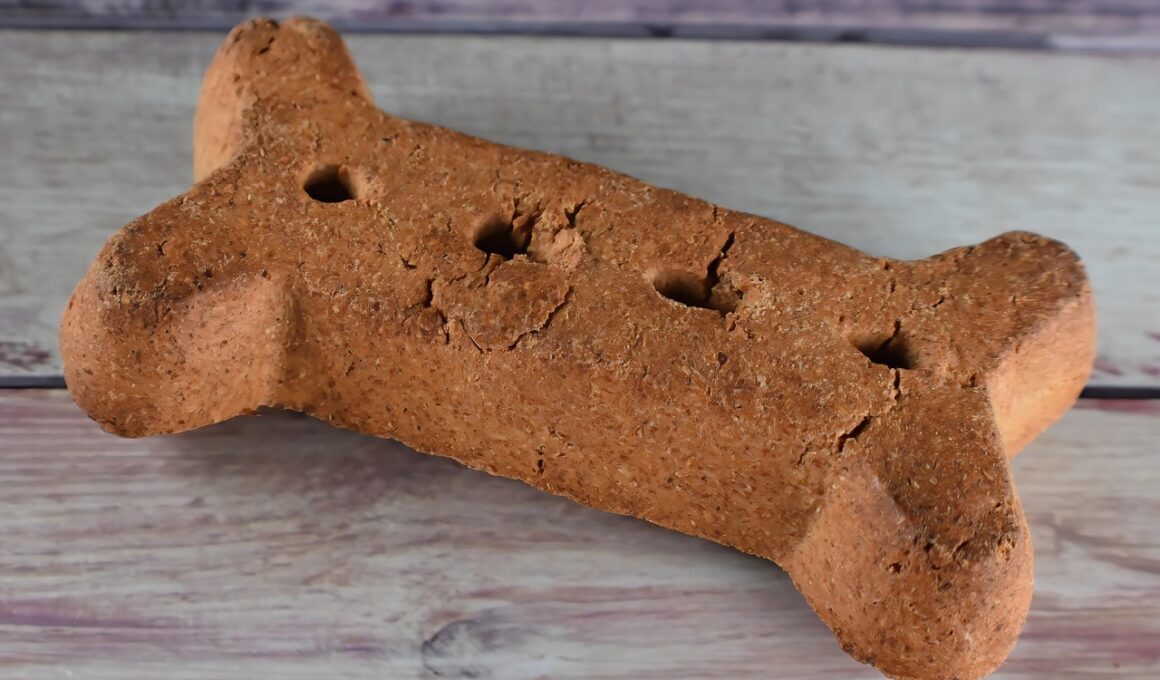Using Treats Effectively in Crate Training
Crate training is an essential technique for every pet owner. When used correctly, it provides a safe space for your dog. The aim is to make the crate a positive environment. Utilizing treats plays a significant role in this process. Start by presenting the crate as a welcoming place. Open the door and encourage your dog to explore. Use treats to coax the dog inside. This initial introduction should be calm and rewarding. Dogs associate the crate with positive experiences. Frequent praises enhance their willingness to enter. While training, it is vital to use high-value treats. These are more appealing to dogs and motivate them. Avoid common treats that might be too familiar. Instead, opt for special items, like small pieces of chicken or cheese. Place treats inside the crate to encourage exploration. Gradually increase the time spent inside the crate as your dog becomes comfortable. This helps in creating a sense of security in their new space. Patience is key here; every dog learns at their own pace. The goal is to build confidence while making crate time enjoyable and rewarding.
Understanding your dog’s behavior is crucial when using treats in crate training. Dogs communicate their feelings primarily through body language. Look for signs of anxiety or stress when they are near the crate. If your dog seems hesitant, try a different approach. You can incorporate more enticing treats or different toys. Always ensure the treats are appropriate for your dog’s diet and size. Consistency is also vital; use the same commands and rewards. This reinforces their learning process and builds a strong association with the crate. Add a cue word when your dog enters the crate to facilitate training. For instance, you might use ‘In your house!’ in a joyous tone when luring them in. Over time, your dog will associate that phrase with crate time. Make sure to vary the rewards too; sudden diversity in treats keeps their interest high. Remember, positive reinforcement is more effective than punishment. Instead of discouraging your dog from coming out, reward them for staying inside. Establish a routine that encourages a comfortable and happy crate experience, which can lead to less anxiety during longer periods in the crate.
Gradually Increasing Crate Time
Focus on giving your dog a short crate session initially. This establishes a foundational comfort level. Use treats generously during these early sessions to reinforce their positive vibe. Once your dog comfortably settles in, you can gradually increase the time inside the crate. Monitor their behavior closely during this period. If they bark or show distress, it’s time to shorten the duration. A gradual approach helps reduce anxiety and builds trust. You can provide treats during the crate-timing sessions to make it enjoyable. Praise them verbally while they’re inside, encouraging positive feelings. Use toys that dispense treats to further entertain them. Interactive toys are beneficial as they engage your dog while they’re in the crate. This way, your dog will associate being inside with fun and rewarding experiences. Avoid giving in to barking once training has commenced; this could reinforce negative behavior. Instead of thinking crate time as punishment, always treat it as an enjoyable retreat. Consistency in this method transforms the crate into their secure haven over time. Therefore, periodic treats and consistent praise help maintain their positive attitude while adjusting to longer crate durations.
Another vital aspect is determining the right timing for reward treats. Timing can be critical to reinforce specific behaviors effectively. As soon as your dog enters the crate, offer the treat immediately. This connection solidifies the understanding that entering gets rewarded. If you wait too long after they’re settled, your dog might lose the association. Practice this several times to make sure the idea becomes apparent. Eventually, you can lessen the frequency of treats, transitioning to occasional praise. This can help avoid creating dependency on treats. Ensure to use rewards intermittently to maintain motivation. Introduce new treat variations to keep them engaged throughout the training process. Using different types of rewards keeps excitement alive. It’s also beneficial to pair praise with treats to enhance the effectiveness. Achieving a balance between verbal encouragement and treat-based rewards is essential. Such an approach fosters a bond of trust between you and your dog. Building a strong relationship encourages your dog to embrace crate time positively. Ensure every session ends on a high note, with lots of praise irrespective of their behavior during the exercise. A positive mindset is key, creating excitement around the crate experience.
Treat Strategies for Successful Reinforcement
Consider varying your approach towards treat delivery. Instead of just handing treats, make it a more engaging experience. For instance, toss treats inside the crate, encouraging your dog to enter eagerly. This method turns the crate into an exciting game’s goal. Similarly, you can hide treats inside the crate amongst toys. This encourages your dog to sniff around and explore, making the crate feel less confined. Consistency in engaging strategies like this keeps the dog focused. Treat delivery thus becomes less predictable and intriguing. Remember to supervise the treat hunts; safety must remain a priority. Also, ensure treats are safe and appropriate for your dog’s size. Portion control is essential, as overindulgence could lead to undesired weight gain. Monitoring the frequency and quality of your treat delivery helps maintain your dog’s overall health. As your dog grows more accustomed, reduce the frequency of high-value rewards, slowly replacing them with their regular kibble. Using meals as treats also keeps your dog in check health-wise. Remember, all these strategies revolve around creating a positive crate experience. Your ultimate goal remains to instill trust, association, and stability around crate time.
Another important factor in treats for crate training involves timing your introduction. Introducing the crate gradually helps minimize any initial stress. Use the treats less as a direct lure and more as a tool for positive reinforcement. This involves rewarding your dog for exhibiting calm behavior inside the crate rather than for merely entering it. Over time, they understand that relaxed behavior translates to rewards. After a few calm minutes, offer a treat to enforce this behavior. Watch for their body language; comfort should be the priority. If your dog feels anxious, support them through the process. Gradually build up the time they can stay inside. Use the crate for short intervals initially, slowly lengthening the duration as your dog views it as a safe space. Introduce the crate while your dog is tired after exercise; it might facilitate easier settling in. Rewards at this moment can reinforce the behavior encouraging relaxation. Stay committed through the journey, and remain patient as your dog adjusts. This holistic approach builds a healthy relationship around crate time and reduces future anxieties.
Conclusion and Moving Forward
In conclusion, using treats effectively in crate training can lead to long-term success. The balance of timing, variety, and engagement keeps your dog anticipating positive experiences. Pay attention to your dog’s unique preferences; adapt the treats to personalize their training. Using high-value rewards often helps maintain motivation, especially in the early stages. Depending on your dog, consistency, patience, and an understanding of their needs ensure a clear path to success. Always be flexible, adapting your methods to support their growth during training. Regularly assess how well your dog settles in and adjust your approach as required. Celebrate small victories; they are foundational elements of long-term behavior change. Crate training, when understood correctly, becomes a rewarding journey for both you and your dog. The crate can evolve into a sanctuary rather than just a confinement tool. Ultimately, this leads to peace of mind during travel or longer periods at home. Training your dog solely through positive reinforcement simplifies the process. With love, patience, and treats, crate training can truly become a delightful experience for your furry friend.
This article encourages readers to embrace the transformative journey of crate training. Involving the proper techniques and a treat-based strategy redefines the crate experience positively. View crate time as an opportunity for introductory learning, bond strengthening, and safe solace. The methods discussed promote responsible pet ownership, emphasizing patience and understanding. These teachings set the stage for a lifetime of cooperation. By embracing these techniques, you lay foundations for behaviors that present your dog as a reliable companion. In the end, your dog’s crate becomes not just an item of training but a comfortable place synonymous with affection. Nurturing the relationship through effective training creates enduring partnerships. Explore ongoing education and support to enhance crate training techniques continually. You will discover endless opportunities for growth as you continue this journey. Engaging with other pet owners can also provide insight into various training methods. You can share experiences and strategies that work well for your mutual benefit. A community creates various support systems, encouraging everyone to succeed. Consider attending classes or seeking professional assistance if necessary. The journey of crate training ultimately rewards both pets and owners.


